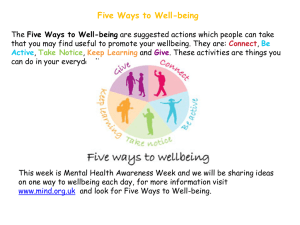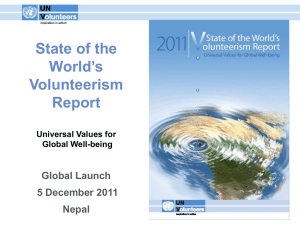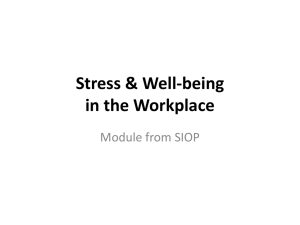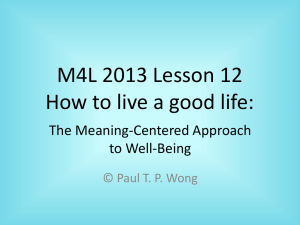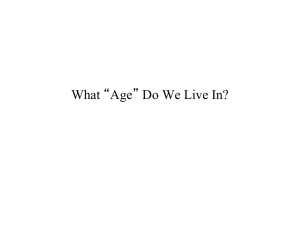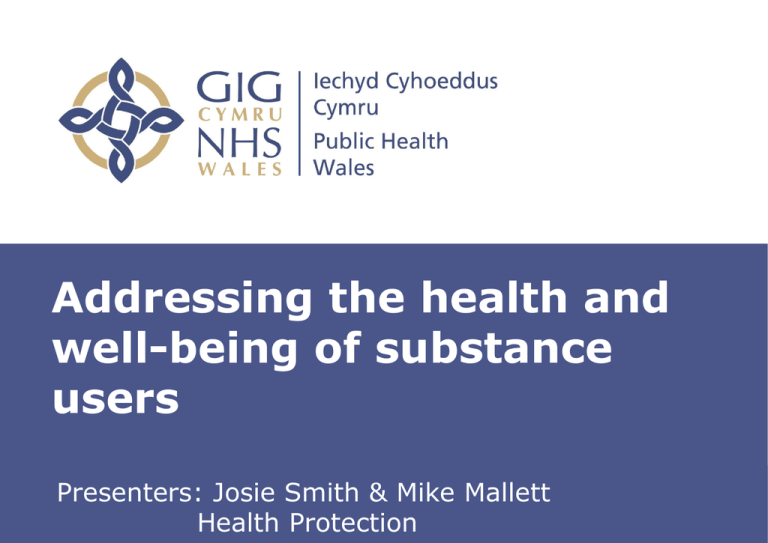
Addressing the health and
well-being of substance
users
Hepatitis C Action
Wales &
– roles
Presenters:
JosieinSmith
Mikeand
Mallett
responsibilities
Health Protection
Background
• Welsh Government identified need to address wider
issues of health and well-being of service users
• Establishment of multidisciplinary
‘Harm Reduction Expert Group’
• Remit established
• Work undertaken by Public Health Wales
Addressing the health and well-being of
Substance users
Aims
To provide a summary of existing evidence and best
practice and develop recommendations for action on:
• Oral health
• Sexual health
• Safer injecting and other drug modes of use
• Wound management
• Blood borne viruses
• Reducing fatal and non-fatal poisonings (overdose)
• Targeting especially vulnerable groups
Addressing the health and well-being of
Substance users
Oral Health
Addressing the health and well-being of
Substance users
Oral Health
UK studies indicate that nearly 70% of drug users reported oral health
problems compared to half of non-drug users... however ...
60% of non-drug using group regularly attended dental health services
compared to under 30% of drug users1
Barriers to accessing services may include:2
• Homelessness / social exclusion
• Low self-esteem
• Fear / anxiety
• Unsympathetic / Stigmatising behaviour by professionals
• Being refused treatment by dentists
1. Charnock S et al. A community Based programme to improve access to dental services for drug users. BDJ 2004; 196: 385-8.
2. Sheridan J, Aggleton M, Carson T. Public dental health: dental health and access to dental treatment: a comparison of drug users
and non-drug users attending community pharmacies. BDJ 2001;191: 453-7.
Addressing the health and well-being of
Substance users
Oral Health
There are a number of reasons for increased dental need amongst people
with substance misuse issues:
(http://www.smmgp.org.uk/download/others/other060.pdf)
• Poor nutrition
• Lack of dental hygiene
• Low pain tolerance
• Masking of dental pain / self-medicating pain
• High sugar consumption / Carbohydrate cravings
• Use of carbohydrate additive in drug mix
• Lack of access to dental services
• Apathy towards dental (and general) health care
Addressing the health and well-being of
Substance users
Oral Health
Dental treatment and rehabilitation has been
shown to impact positively in recovery from
problematic drug use.3
(some of the) Recommendations:
•
•
•
All providers should consider dental and substance misuse
problems as associated co-morbidities and dental care should be
incorporated in each individuals care planning.4
Ensure regular access to dental hygienists / dental health service
practitioners with experience of this client group and encourage
registration
For highly socially excluded groups including homeless populations,
provide outreach or mobile dental services
3. Robinson PG, Acquah S, Gibson B. Drug users: oral health-related attitudes and behaviours. BDJ 2005; 198: 219-24
4. D’Amore MM, et al. Oral health of substance-dependent individuals: Impact of specific substances. J Subst Abuse Treat
2011;21:179-85
Addressing the health and well-being of
Substance users
Sexual Health
Addressing the health and well-being of
Substance users
Sexual health
Sexual health may be defined as ‘a state of physical,
emotional, mental and social well-being related to sexuality;
it is not merely the absence of disease, dysfunction or
infirmity. Sexual health requires a positive and respectful
approach to sexuality and sexual relationships, as well as the
possibility of having pleasurable and safe sexual experiences,
free of coercion, discrimination and violence’.1
“it is not merely the absence of disease,
dysfunction or infirmity…”
1. World Health Organization. Defining sexual health. Report of a technical consultation on sexual health, 28-31 January 2002,
Geneva. Geneva: WHO; 2002. Available at:
http://www.who.int/reproductivehealth/publications/sexual_health/defining_sexual_health.pdf
Addressing the health and well-being of
Substance users
Sexual health
Casual sex encounters are often facilitated by alcohol or
drug use increasing the likelihood of the consequences of
sexual risk taking such as unprotected sex.2,3
•
•
•
•
STIs
HIV
Pregnancy
Sexual violence
2.
Downing J et al. Factors associated with risky sexual behaviour: a comparison of British, Spanish and German holidaymakers to the
Balearics. Eur J Public Health 2010; 21: 275-81.
Bamber E. Improving the sexual health of drug users. Br J Sex Med 2009; 32:7-9.
3.
Addressing the health and well-being of
Substance users
Sexual health
(some of the)
Recommendations:
•
Discussion around sexual health, contraception, STI and BBV
screening should be included as part of care planning discussions
•
Condoms should be provided in a range of substance misuse
settings free of charge and no limits should be placed on
quantities. Advice should be offered with regard to correct use
of condoms
•
Proactive/assertive outreach sexual health services should be in
place for hard-to-engage groups of problematic substance users
who would otherwise not access mainstream services. Where
this is not possible, staff should be encouraged to support
service users to attend mainstream sexual health clinics
Addressing the health and well-being of
Substance users
Safer injecting and other modes
of drug use
Addressing the health and well-being of
Substance users
Safer injecting and other modes of
drug use
Injecting drug use
Issues include:
• What drug or combination of drugs are being injected
• Selection of appropriate equipment including the size of barrel as well
as length and gauge of needle and paraphernalia
• Intended method of administration intravenous (IV), subcutaneous
(SC) or intramuscular (IM)
• Preparation of the substance
• Site of injection
• Environment – Hygiene issues include clean hands, preparation area,
public or inside
• Safe disposal of used injecting equipment to reduce risk of reuse or
sharing
Addressing the health and well-being of
Substance users
Safer injecting and other modes of
drug use
3000
2500
2000
1500
1000
500
0
I V Groin
I V Neck
I V Arms or
Legs
I V Not
Specified
Intramuscular Subcutaneous
Addressing the health and well-being of
Substance users
Smoking
Oral
UYB
Safer injecting and other modes of
drug use
•
•
•
•
Snorting (insufflation)
Swallowing / bombing
Smoking
Rectal administration
Addressing the health and well-being of
Substance users
Safer injecting and other modes of
drug use
(some of the)
Recommendations:
• Specialist substance misuse services and NSP’s promote
and support the development of peer-led training and
promotion of safer use of drugs
• Support staff training and development with regard to new
and emerging drugs in order to deliver harm reduction
information
• Establishment of a health and wellbeing clinic within each
local health board, offering assessment and first aid or
triage to a variety of problems faced by people who use
drugs
Addressing the health and well-being of
Substance users
Wound care
Addressing the health and well-being of
Substance users
Wound care
People who inject drugs (PWIDs) are at increased
risk from a variety of infections and health problems
associated with the injecting process.1
•
•
•
•
Localised bacterial infections and soft tissue damage
Abscesses and sores
Systemic illnesses and life threatening conditions
Relatively minor infections can become much worse as
there is a delay in seeking appropriate intervention
1.
Health Protection Agency. Shooting up. Infections among injecting drug users in the
UK 2009. London: HPA; 2011. Available at:
http://www.hpa.org.uk/webc/HPAwebFile/HPAweb_C/1317131377664
Addressing the health and well-being of
Substance users
Wound care
• Self-report data indicates that, per annum, 30-40% of
PWIDs suffer an abscess, sore or open wound1
• Estimated cost to NHS - £47 million to the NHS per
year2
• Higher rates are reported in higher risk groups
including homeless and crack injectors1
In
•
•
•
•
the UK since 2000 there have been
163 cases of wound botulism
93 of Clostridium novyi infection
52 confirmed cases of anthrax
35 of tetanus
2.
Hope V et al. Frequency, factors and costs associated with injection site infections: findings from a national multi-site
survey of injecting drug users in England. BMC Infect Dis. 2008; 8: 120. Available at:
http://www.ncbi.nlm.nih.gov/pmc/articles/PMC2600824/pdf/1471-2334-8-120.pdf
Addressing the health and well-being of
Substance users
Wound care
Barriers:
• Evidence from 500 current or recent ex-injecting drug users in
Wales3 indicated that:
– 11% were not registered with a GP,
– 28% had not informed their GP of any drug use.
– 43% (n=214) reported suffering from an injecting related problem, of which
32% had not sought medical intervention
•
•
•
•
Not registered with a GP
Difficulty getting to services because of finance
Accessibility
Previous poor experience within health services
3.
National Public Health Wales: Needs assessment of harm reduction and health care services for substance misusers across Wales.
Cardiff: NPHS; 2006 Available at:
http://www2.nphs.wales.nhs.uk:8080/BloodBorneVirusesDocs.nsf/public/C662FCE951549DD880257355004CCBBF/$file/Needs%20
assessment%20of%20harm%20reduction%20and%20health%20care%20services%20for%20substance%20misusers%20across%
20Wales.pdf
Addressing the health and well-being of
Substance users
Wound care
Recommendations:
• Prevention of infection
• Early identification
• Clear and rapid referral pathways to specialist
services for the treatment of infections and wounds
Addressing the health and well-being of
Substance users
Blood borne Viruses
Addressing the health and well-being of
Substance users
Blood borne viruses
• In Wales estimated to
be around 12,000 –
14,000 individuals
infected with Hepatitis C
(HCV)
•Number of chronic
hepatitis B (HBV)
infections not clear
Addressing the health and well-being of
Substance users
Table x : Risk factor information in laboratory reports of hepatit
from Wales: 1996 to 2009
Blood borne viruses (HCV)
Risk factor (where reported)
Injecting drug use
Transfusion
Blood product recipient
Sexual exposure
Renal failure
Vertical (mother to baby) or
Household
Occupational
Other
TOTAL
Number
of reports
965
14
19
10
2
Percentage
93.6
1.4
1.8
1.0
0.2
6
0
15
1031
0.6
0.0
1.5
100
Addressing
the 13
health
and well-being of
Data
from Dataease
May 2011
Substance users
Blood borne viruses (HBV)
• infection is found in:
– ex and current injecting drug users
– ethnic minority groups
– men who have sex with men (MSM)
– sex workers
– Those with history of incarceration
However, an effective vaccination is available to prevent
infection with hepatitis B although HBV vaccination coverage
is poor among many risk groups
Addressing the health and well-being of
Substance users
Blood borne viruses
An effective response to blood borne virus infection must
have three key aims:
• Prevention of further infection
• Diagnosis of infection
• Treatment or management of infection
Addressing the health and well-being of
Substance users
Reducing fatal and non-fatal
poisonings
Addressing the health and well-being of
Substance users
Reducing fatal and non-fatal poisonings
•
•
In 2010 - 1784 deaths related to drug misuse were recorded in England
and Wales. An increase of 15.2% in Wales
History of overdose – self report data from Harm Reduction Database –
Naloxone – Just under 40% reported one or more previous overdose
500
450
400
350
300
250
200
150
100
50
0
No previous
history of
overdose
Previous
Overdose once in
Overdose 2 or
overdoses but not
the last year
more times in last
in last year
year
Addressing the health and well-being of
Substance users
Reducing fatal and non-fatal poisonings
Risk Factors:
•
Co-ingestion of multiple substances, especially central nervous system
depressants such as opioids, alcohol and benzodiazepines contributes to
a substantial proportion of these deaths.1
•
Individuals are particularly vulnerable in the transitional periods of their
opioid drug using career, for example; after detoxification treatment,
release from prison, exiting drug treatment (especially unplanned exits)
or leaving residential treatment.2
•
Are we seeing fatal and non-fatal poisonings in those using new
psychoactive substances?
1.
Ghodse H et al. Drug-related deaths in the UK. Annual Report 2010. London: International Centre for Drug Policy; 2010. Available
at: http://www.sgul.ac.uk/research/projects/icdp/pdf/np-SAD%2011th%20annual%20report%20Final.pdf
Goodwin A. Measuring the harm from illegal drugs. The Drug Harm Index 2005. London: Home Office; 2007. Available at:
[http://webarchive.nationalarchives.gov.uk/20110220105210/rds.homeoffice.gov.uk/rds/pdfs07/rdsolr2207.pdf
2.
Addressing the health and well-being of
Substance users
Hospital admissions in Wales for mental or behavioural disorders due to named illicit drugs
2006 - 2010
1600
1400
Number of admissions
1200
1000
800
600
400
200
0
2006
2007
2008
2009
2010
Opioids
Cannabinoids
882
942
1085
1174
1351
344
270
286
310
333
Multiple/psycho
active drug use
315
269
288
302
340
Other
Stimulants
201
141
121
124
151
Cocaine
75
97
122
81
85
Sedative/Hypno
tics
52
51
57
76
67
Addressing the health and well-being of
Substance users
Hallucinogens
49
50
36
28
44
Volatile
Substances
2
7
4
10
5
Reducing fatal and non-fatal poisonings
(Some of the)
Recommendations:
• Appointment of drug-related death prevention outreach workers
to target those most at risk of drug related death in the
community
• Appointment of substance misuse liaison nurses in emergency
departments (where they do not currently exist)
• Ensure that emergency department staff:
– Consistently offer information on overdose prevention
– Offer signposting/referral to harm reduction or substance misuse treatment
services for those treated for a near-fatal overdose, particularly to repeatoverdose patients
• Ensure continuity of care through community-based harm
reduction or substance misuse treatment services for released
prisoners
Addressing the health and well-being of
Substance users
Targeting especially vulnerable groups
Nota Bene
Addressing the health and well-being of
Substance users
Targeting especially vulnerable groups
Within this document and in alphabetical order, vulnerable groups
include:
• Asylum seekers and refugees
• Black and minority ethnic groups
• Children and young people in care
• Commercial sex workers
• Gypsies and travellers
• Homeless people
• People with learning disabilities
• People with mental health problems
• Older people
**Clearly these groups are not mutually exclusive and
there will be considerable overlap between them **
Addressing the health and well-being of
Substance users
Targeting especially vulnerable groups
Asylum seekers and refugees
Lack of reliable data on the prevalence of drug use as they are likely to
be very reluctant to admit to any involvement with drugs.1 Asylum
seekers and refugees rarely access drug services.
Barriers include:
– lack of awareness
– fear of the authorities
– Stigma
– Language and communication may also be an issue for this
population
– NHS staff may not be aware of the rights and entitlements of asylum
seekers and refugees to primary and secondary care1.
1.
McCormack M, Walker R. Drug prevention for young asylum seekers and refugees. A review of current knowledge. Mentor;
2005. Available at: http://www.mentorfoundation.org/uploads/UK_Drug_Prevention_Lit_Review.pdf
Addressing the health and well-being of
Substance users
Targeting especially vulnerable groups
Black and minority ethnic groups (BME)
•
Research suggests that black and minority ethnic drug users find
treatment services less accessible than the rest of the population. This
may be a particular problem in relation to south Asian communities3.
Both a perceived lack of understanding of culture and occasionally racism
are reported as barriers to service use2
Children and young people in care
•
Children and young people who are homeless, looked after by local
authorities or in foster care are recognised as being at greater risk of
substance misuse3. Research suggests that care leavers have higher
levels of self reported drug use than the general population4
2.
UK Drug Policy Commission. Drugs and diversity: ethnic minority groups. Learning from the evidence. [Online]. Available at:
http://www.ukdpc.org.uk/wp-content/uploads/Policy%20report%20%20Drugs%20and%20diversity:%20ethnic%20minority%20groups%20(policy%20briefing).pdf
National Treatment Agency for Substance Misuse. Models of care for treatment of adult drug misusers: Update 2006. London: NTA; 2006.
Available at: http://www.nta.nhs.uk/uploads/nta_modelsofcare_update_2006_moc3.pdf
Ward J, et al. One problem among many: drug use among care leavers in transition to independent living. Research study 260. London: Home
Office; 2003. Available at: http://www.drugsandalcohol.ie/5584/1/Home_Office_Research_Study_260_One_problem_among_many.pdf
3.
4.
Addressing the health and well-being of
Substance users
Targeting especially vulnerable groups
Gypsies and travellers
•
Recent research suggests that levels of problematic drug and alcohol use
are lower than the rest of the population but are increasing.5
Homeless people
•
A significant proportion of the homeless population have substance
misuse problems. Estimates vary but studies in London (2004/05)
indicated that 35% of street homeless have reported drug problems and
32% alcohol problems.6 Homeless people with substance misuse issues
usually have multiple complex problems.7
5.
National Institute for Health and Clinical Excellence. Community based interventions to reduce substance misuse among vulnerable
and disadvantaged young people. PH4. London: NICE. 2007. Available at:
http://www.nice.org.uk/nicemedia/live/11379/31939/31939.pdf
Combined Homelessness and Information Network (CHAIN). Rough sleeping report for London 2004/05. London: CHAIN; 2005.
Pleace N. Effective services for substance misuse and homelessness in Scotland: evidence from an international review.
Edinburgh: Scottish Government; 2008 Available at: http://www.scotland.gov.uk/Resource/Doc/233172/0063910.pdf
6.
7.
Addressing the health and well-being of
Substance users
Targeting especially vulnerable groups
People with learning disabilities
•
It has been estimated that 0.8% of those with mild and moderate
learning disabilities have substance misuse problems although this is
likely to be an underestimate since it is based on those known to
services.8
People with mental health problems
•
•
8.
9.
It has been estimated that between 30% and 70% of those presenting in
health and social care settings have co-existing mental health and
substance use problems.9
Substance use may lead to and can exacerbate symptoms of mental
illness. Those with dual diagnosis tend to have poorer prognosis and
greater disability.9
Taggart L et al. An exploration of substance misuse in people with intellectual disabilities. J Intellect Disabil Res. 2006; 50: 588-97
Crome L et al. 2009. The relationship between dual diagnosis: substance misuse and dealing with mental health issues. Research
Briefing 30. London: Social Care Institute for Excellence; 2009. Available at:
http://www.scie.org.uk/publications/briefings/files/briefing30.pdf
Addressing the health and well-being of
Substance users
Targeting especially vulnerable groups
Older people
•
•
10.
11.
Substance misuse among older people has to date received relatively
little attention.
Evidence from the Office of National Statistics Adult Psychiatric Morbidity
Survey (APMS) found that:
– 3% of men and 1% of women aged between 65 and 74 and 0.5% of
men aged over 75 reported alcohol dependence in the last 6
months.10
– Those who begin misusing substances after the age of 65 are most
likely to misuse alcohol.11
– Prevalence of drug dependence in the past year for those aged over
65 was less than 1% for both men and women.10
McManus S et al. Adult psychiatric morbidity in England, 2007. Results of a household survey. [Online]. Available at:
http://www.ic.nhs.uk/pubs/psychiatricmorbidity07
Badrakalimuthu VR, Rumball D, Wagle A. Drug misuse in older people: old problems and new challenges. Adv Psychiatr Treat
2010; 16:421-9
Addressing the health and well-being of
Substance users
Finally...
• Consultation process
• Publication online
Thanks to all contributors
and the Harm Reduction
Expert group
Addressing the health and well-being of
Substance users





